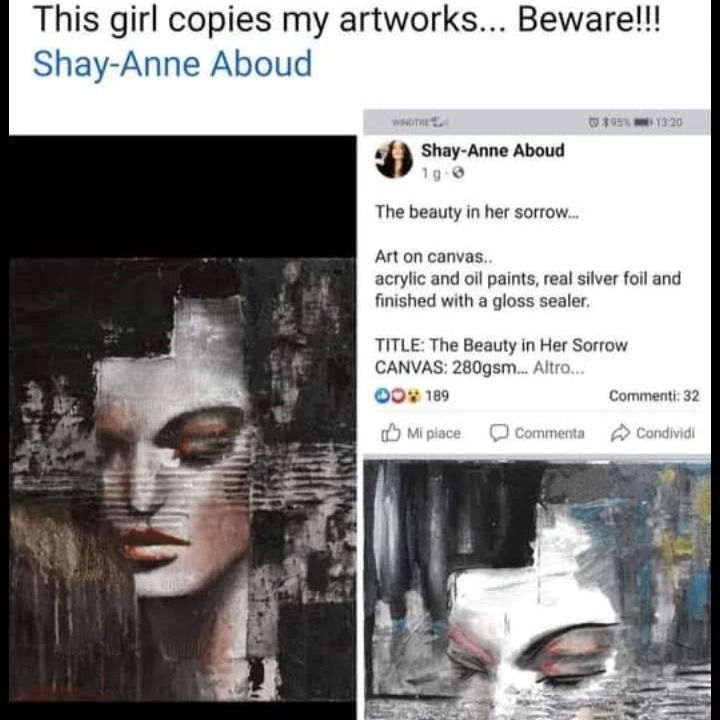How to Handle Plagiarism in the Art World: A Guide for Artists
- Rebecca

- Jul 6, 2024
- 2 min read
Updated: Jul 10, 2024
Artists pour their heart and soul into creating original pieces that reflect their unique perspective and creativity. However, the art world, like any other, is not immune to the issue of plagiarism. Art theft and plagiarism in art can leave artists feeling violated and disheartened. So, how can artists react to plagiarism and navigate the murky waters of handling such situations?
Understanding Plagiarism in Art
Before diving into how to handle plagiarism as an artist, it’s crucial to understand what constitutes art theft. Art theft refers to the unauthorised use, reproduction, or imitation of another artist’s work without proper attribution or permission. When someone passes off another artist’s creation as their own, it not only undermines the original artist's hard work but also tarnishes their reputation.
Art theft can take various forms, from directly copying an artwork to slightly altering it and claiming it as original. Regardless of the method, the impact of plagiarism on artists can be profound, affecting their livelihood and passion for creating.
Reacting to Plagiarism: A Step-by-Step Guide
When you suspect that your work has been plagiarise, take a step back and objectively analyse the similarities between the original piece and the alleged copy. Look for distinct elements that are unique to your style and compare them with the questionable artwork.
Document the creation process of your artwork, including sketches, drafts, and timestamps of its development. Additionally, search for any online or physical records that can establish the timeline of your work. This evidence will strengthen your case against plagiarism.
Approach the individual or entity you believe has plagiarise your work. Express your concerns calmly and professionally, providing them with the evidence you have collected. Sometimes, plagiarism may be unintentional, so allow room for open communication.
If the situation escalates or the suspected plagiarist refuses to acknowledge their wrongdoing, consider consulting with a legal professional specialising in intellectual property rights. They can guide you on the legal options available to protect your artistic creations.
Moving forward, take proactive measures to safeguard your artwork. Consider registering your creations with the appropriate intellectual property office and watermarking or digitally signing your pieces to deter potential plagiarists.
Conclusion: Upholding Artistic Integrity
Art theft is a serious issue that not only affects individual artists but also undermines the integrity of the art world as a whole. By actively addressing plagiarism and taking steps to protect their work, artists can uphold the authenticity and value of their creations. Remember, your art is an extension of yourself—preserve its integrity and ensure that your creative voice remains truly yours.
In a world where artistic expression knows no bounds, let us stand together to combat plagiarism and celebrate the diversity and individuality that make art a powerful and transformative force.

Let’s continue creating, inspiring, and shaping the art world with our originality and passion!
And remember, in the face of art theft, never compromise on your artistic integrity.
Art theft, plagiarism in art, reacting to plagiarism, artist, art, artwork, art theft definition, art theft meaning

Comments